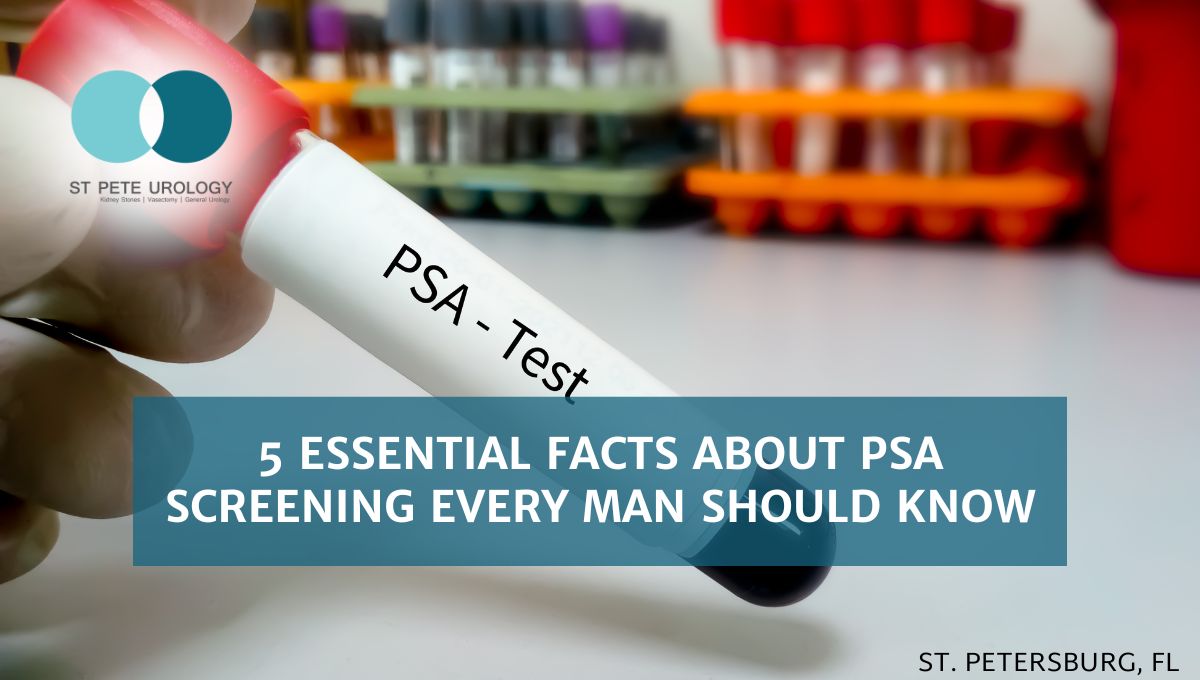Understanding PSA screening guidelines is crucial for prostate health. Learn who needs testing, when to start, and what your PSA numbers mean for early cancer detection.
Continue readingHow and Why Should I Do Kegels?
 Kegel exercises are for strengthening pelvic floor muscles. They involve contracting and relaxing, clenching and releasing those muscles. Also called pelvic floor exercises, Kegels strengthen and coordinate the muscles that support the bladder, rectum, uterus and small intestines. The strengthening, in turn, helps to prevent the accidental passing of stool or gas, stops bladder leaks, and improves orgasm.
Kegel exercises are for strengthening pelvic floor muscles. They involve contracting and relaxing, clenching and releasing those muscles. Also called pelvic floor exercises, Kegels strengthen and coordinate the muscles that support the bladder, rectum, uterus and small intestines. The strengthening, in turn, helps to prevent the accidental passing of stool or gas, stops bladder leaks, and improves orgasm.
What are the benefits of Kegel exercises?
1. Prevent pelvic organ prolapse
Pelvic floor muscles support abdominal organs such as the stomach, bladder, intestines and uterus. With age, the weakening and slowing down of these muscles may lead to pelvic organ prolapse (POP).
A prolapse means the pelvic organs are displaced, drooping and fallen out of their normal position. In women, the pelvic organs may fall into the vagina or cause vaginal tissues to protrude from the body, particularly if the prolapse occurs after a hysterectomy.
Through regular Kegel exercises, pelvic floor muscles become stronger and more coordinated, reducing the risk of prolapse.
2. Avert incontinence
Pelvic floor exercises not only contribute to good posture and spinal stability, they also strengthen the muscular support for bladder and bowel function and help to maintain urinary and fecal continence. If you already have bowel or bladder incontinence, or drip after peeing, the exercises can help to relieve your symptoms.
3. Enhance sexual function
Kegel exercises improve sexual function. In men, they increase control over ejaculation and enhance the feeling experienced during orgasm. In women, the exercises improve flexibility and ease penetration. In addition, they provide the muscular strength to achieve orgasm while also making pregnancy and childbirth easier.
How should you do Kegel exercises?
1. Begin by identifying pelvic floor muscles
Kegel exercises do not require a lot of time, but targeting the right muscles is necessary. One of the easiest ways to identify the muscles is to stop urinating midstream by squeezing your muscles to hold the urine in. Another way of locating the muscles is to stop the passage of gas.
The muscles that help you to stop the passage of urine or gas are the ones you will need to work on. You only need to stop passing urine once or twice in order to identify the right muscles. After that, it is not advisable to perform Kegel exercises while urinating as that can lead to incomplete emptying of the bladder and increased risk of urinary tract infections.
2. Start slowly and improve with practice
Like other exercises, Kegels become easier with practice. Plan to begin slowly and build on your gains over time. For instance, you can start by squeezing your pelvic floor muscles for 3 seconds, releasing for another 3 seconds, and then repeating 10 times in a row. If you are not able to do 10 at time, begin with a lower number and increase with time.
3. Keep the focus
As you do these exercises, you will be tempted to flex the buttocks, thighs or abdomen. You may also find it difficult to increase the number of repetitions. Always target and exercise your pelvic floor muscles, pushing your body to complete at least one set of 10 Kegel exercises two to three times a day.
As you do the exercises, make sure to relax your pelvic floor muscles completely and to avoid holding your breath.
4. Perform Kegels anytime, anywhere
Kegel exercises are quite convenient. You can make them part of your routine and do them anywhere, whether brushing your teeth, driving to work, shopping for groceries or watching TV. Combining the exercise with another activity is a good way to remember your routine and see quick results.
Can Kegel exercises cause complications?
While the exercises are completely safe, you still need to do them the right way. For instance, you should not overdo Kegels as this may lead to straining when you visit the bathroom. You should also not do them as you urinate because that could increase your risk of urinary tract infections.
Kegel exercises are not for everyone. If your muscles are already tired, they will not respond if you try to contract them. Also, if your muscles are already tight, exercising them may cause more harm. Speak with your urologist to determine if you can benefit.
Are the exercises effective?
For those who do Kegel exercises regularly, the results are excellent. For example, urine leaks become less frequent within a few weeks of starting the exercises. Keep in mind that they have more impact when performed regularly over an extended period of time, such as doing them every day for at least 15 weeks. If you do not feel your symptoms are improving, you should speak with your doctor about alternative treatments.
At St Pete Urology, we offer personalized treatments for patients with urological problems. We will only recommend you do Kegel exercises after a thorough assessment of your condition. For more information on pelvic floor exercises and other treatment options for urologic disorders, visit the St Pete Urology website.
How do you keep your prostate healthy?
 Prostate health is an important part of overall health for men. The prostate is a walnut-sized gland situated between the bladder and the penis. The urethra, the tube through which urine exits the body, runs through the prostate. One of the prostate’s main functions is producing a fluid that nourishes and protects sperm. For men, the prostate is an important part of both the urinary and reproductive systems.
Prostate health is an important part of overall health for men. The prostate is a walnut-sized gland situated between the bladder and the penis. The urethra, the tube through which urine exits the body, runs through the prostate. One of the prostate’s main functions is producing a fluid that nourishes and protects sperm. For men, the prostate is an important part of both the urinary and reproductive systems.
The prostate is also the organ where the most common form of cancer for men develops. This cancer affects many men and the chances of developing it increase with age. The prostate also grows in size as men age. The rate and side effects of this growth can vary, but the most common symptoms are difficulty urinating and having to urinate frequently.
Given the importance of the prostate’s role and how easily it can develop problems, good prostate health is important. Luckily, there are simple lifestyle changes that can help improve prostate and overall health. These changes start with diet and exercise. There is a great deal of evidence that diet can help determine prostate health as well as cancer risk. It is recommended to have at least five servings of fruits and vegetables a day. Whole-grain bread and pastas are also recommended.
Protein is an important food group and eating the right kinds of protein plays a big role in prostate health. It is recommended to limit the intake of red and processed meats. Healthier sources of protein include fish, chicken, beans and eggs. Like protein, consuming the right fats is important, too. Healthy fats from olive oil, nuts, and avocados are much better than fats from animal byproducts or the trans fats found in fast food.
Sugar, salt and exercise play a role in prostate health as well. Sugary drinks like soda should be limited or cut out completely. Sweets in general should be an occasional treat, not a food group in your diet. Salt intake should be cut down for prostate health and keep in mind that most processed foods are very high in salt content.
Exercise is also important for maintaining good prostate health. There is evidence that regular exercise helps bring down the risk of stroke, heart disease and certain types of cancer.
Small changes to diet and exercise can add up to big health improvements, but there is still more you can do. Another important tool in keeping your prostate healthy is having a good relationship with your urologist. Yearly prostate exams and an open dialogue with a trusted urologist is key to maintaining prostate health and resolving issues early, before they turn into serious health problems. The urologists at St Pete Urology are dedicated to helping you keep your prostate healthy.
What is The Prostate and Prostate Enlargement?
The prostate gland (commonly called prostate) is a small, chestnut-sized organ in men located beneath the bladder and in front of the rectum (back passage). The urethra, the tube that passes urine from the bladder to the penis, runs through the prostate. By producing a fluid called prostatic fluid that makes up around 15-30 percent of the total volume of semen, the prostate plays a significant role in the function and viability of sperm cells and is critical for a man’s fertility.
Prostatic fluid contains citric acid, zinc, spermine and prostate-specific antigen (PSA), which protect and enrich sperm and reduces acidity of the vaginal canal. Muscles of the prostate usually press into the urethra during ejaculation, helping sperm to move through the urethra.
What is prostate enlargement?
While the prostate is usually a small gland, it typically grows bigger with age. In fact, from birth to early 20s, the prostate grows by around 8 times its initial size. Then from around the age of 25 to early 50s the prostate doubles in size and continues to grow gradually. It is this second phase of growth of the gland which, in later years, results in a non-cancerous condition called benign prostatic enlargement (BPE) or benign prostatic hyperplasia (BPH).
As the prostate grows larger, it causes the muscles at the base of the bladder to become thicker and pressures the urethra to become narrower. By squeezing the urethra more tightly, the enlarged prostate makes it difficult to urinate. The bladder also may become more sensitive, causing a need to pass urine more frequently and suddenly. In some cases, prostate enlargement may cause a blockage that triggers repeated urinary tract infections, bladder or kidney damage, and acute urinary retention (sudden inability to pass urine).
How common is prostate enlargement?
Although prostate growth continues almost throughout a man’s life, the resulting enlargement does not usually cause serious problems until late in life. An enlarged prostate hardly causes symptoms before the age of 40, but some symptoms occur in half of men in their 60s and in up to 90 percent of men in their 70s and 80s. In the United States, as many as 14 million men experience lower urinary tract problems related to benign prostatic hyperplasia while at least 400,000 annual hospital stays involve a diagnosis of prostate enlargement.
You are more likely to have BPH if:
- You are 40 or older.
- You have a family history of BPH.
- You lack physical exercise.
- You have erectile dysfunction.
- You have medical conditions like type-II diabetes, obesity, circulatory and heart disease.
Common symptoms of prostate enlargement include:
- Urinating 8 or more times a day (urine frequency).
- Inability to delay urination (urine urgency).
- Trouble starting to urinate.
- A weak or interrupted urine stream.
- Inability to empty your bladder completely (urine retention).
- Dribbling at the end of urination.
- Accidental leakage of urine (urinary incontinence).
- Pain during urination or after ejaculation.
- Unusual color or smell of urine.
- Blood in urine.
Most of these symptoms are not specific to benign prostatic enlargement and may be caused by bladder problems, prostatitis, urinary tract infections (UTIs), or a more serious problem such as prostate cancer. Therefore, men with such symptoms should seek immediate medical attention.
Diagnosis and treatment of prostate enlargement
When you visit a GP or a specialist such as urologist, various steps will be taken to determine the cause of your symptoms. The doctor will take your medical, personal and family history, ask questions about the symptoms and their effect on your life and conduct a physical examination to check the size, feel and shape of your prostate. The urologist also may request tests such as prostate-specific antigen (PSA) and ultrasound scan to rule out any serious complications.
There are many treatment options for BPH. For instance, the doctor may recommend lifestyle changes, bladder training exercises or medications (such as muscle relaxants and hormone blockers). The doctor also may perform surgery to correct the problem.
At St. Pete Urology, we have a highly skilled team of urologists with a great deal of experience diagnosing and treating BPH and other urinary problems. We fix these issues quickly, safely and effectively, helping you to resume your normal life and activities. For more information on treatment of benign prostatic hyperplasia, visit the site, St Pete Urology.
Considerations in Advanced Prostate Cancer
Prostate Cancer is the second leading cause of death pertaining to cancer-related diseases among men in the United States. But despite its death toll, Prostate Cancer is highly curable when diagnosed and treated early. For more information about Prostate Cancer, call us at (727) 478-1172 or visit us in St Petersburg, Florida.
Causes Of Prostate Cancer
Although researchers are still trying to understand prostate cancer, nobody is one hundred per cent sure what causes of prostate cancer. In fact, there has also been a lot of research aimed at finding better treatment for prostate cancer. However, the key players in the medical field tend to agree on some factors that cause this ailment and this article tries to look at some of those causes. It is also important to note that research is still ongoing and hopefully that new discoveries will emerge, some of which will add to the already documented causes while others may disprove some of the causes of prostate cancer that will be stated here.
Fundamentally, one of the main prostate cancer symptoms is the enlargement of the prostate gland, which causes the urethra to constrict. Other prostate cancer symptoms include the change or the color of urine from the usual dark yellow color into reddish yellow and blood stains in semen.
Age
Many people have argued that age is one of the major causes of prostate cancer. It is said that the older a man gets, the higher the chances of getting prostate cancer. There is no definitive age that has been set as the age bracket within which men can get prostate cancer. Neither has there been a minimum age at which men who have not attained that age cannot get the disease. However, medical experts argue that prostate cancer is not prevalent in men who are below 45 years old. In fact, many prostate cancer patients are usually 45 years and above.
Genetics
The role of the genetic coding in many diseases cannot be ignored. It has also been found to be one of the causes of prostate cancer. People whose families have a history of prostate cancer are more likely to have the disease than those who do not. If a man’s twin brother has prostate cancer, he is also likely to get the disease. If a man’s father, uncle or grandfather has/had the disease, he is twice as likely to get it too. Research has also shown that the disease is more prevalent in some races than in others. Generally speaking, African American men are more likely to have prostate cancer than are Caucasian Americans or Hispanics. However, this is not to say that the two races (Caucasian Americans and Hispanics) cannot get prostate cancer.
Diet
There has been sufficient medical evidence that links prostate cancer and poor eating habits. An article published by Cancer Prevention Research in October 2011 revealed that men who took fish oil supplements and low fat diet for four to six weeks before undergoing treatment for prostate cancer (surgery) showed slowed prostate growth than those who maintained fatty western diets. Other studies show that consumption of Mediterranean diets as well as soy, selenium and green tea helps in the reduction of prostate cancer. This means that maintaining a healthy lifestyle is also important in prevention of prostate cancer. It has been found that people who do yoga, exercise regularly as well as eat healthy foods are less likely to get prostate cancer than those who do not.
Bobby Bowden Revelation on Prostate Cancer
Football coach Bobby Bowden of Florida State, a 2-time national champion and 377-game winner, revealed he was successfully treated for prostate cancer in 2007. Bowden keep his prostate cancer, the second leading cause of cancer death in men, a secret for four years and didn’t want anyone to find out he had cancer because he was worried other schools would use it against him in recruiting. Bowden believed it was now his moral duty to bring it out in the open this prostate cancer awareness month. Especially now that he’s no longer coaching. “We’ve got to get men aware of this and be sure they get to the doctor and get their checkup where they can discover it like they did with me” Bowden told AP. Following the annual physical exam, Bowden was referred to Urologist Dr. Joe Camps. He’s a former player of Bowden who treated him by implanting low-dose radiation seeds in Bowden’s prostate. He has been cancer-free since undergoing that procedure. He hopes his experience will serve as a teaching tool. Bowden’s revelation was first reported in Tuesday’s edition of USA Today.
Original Article here.




